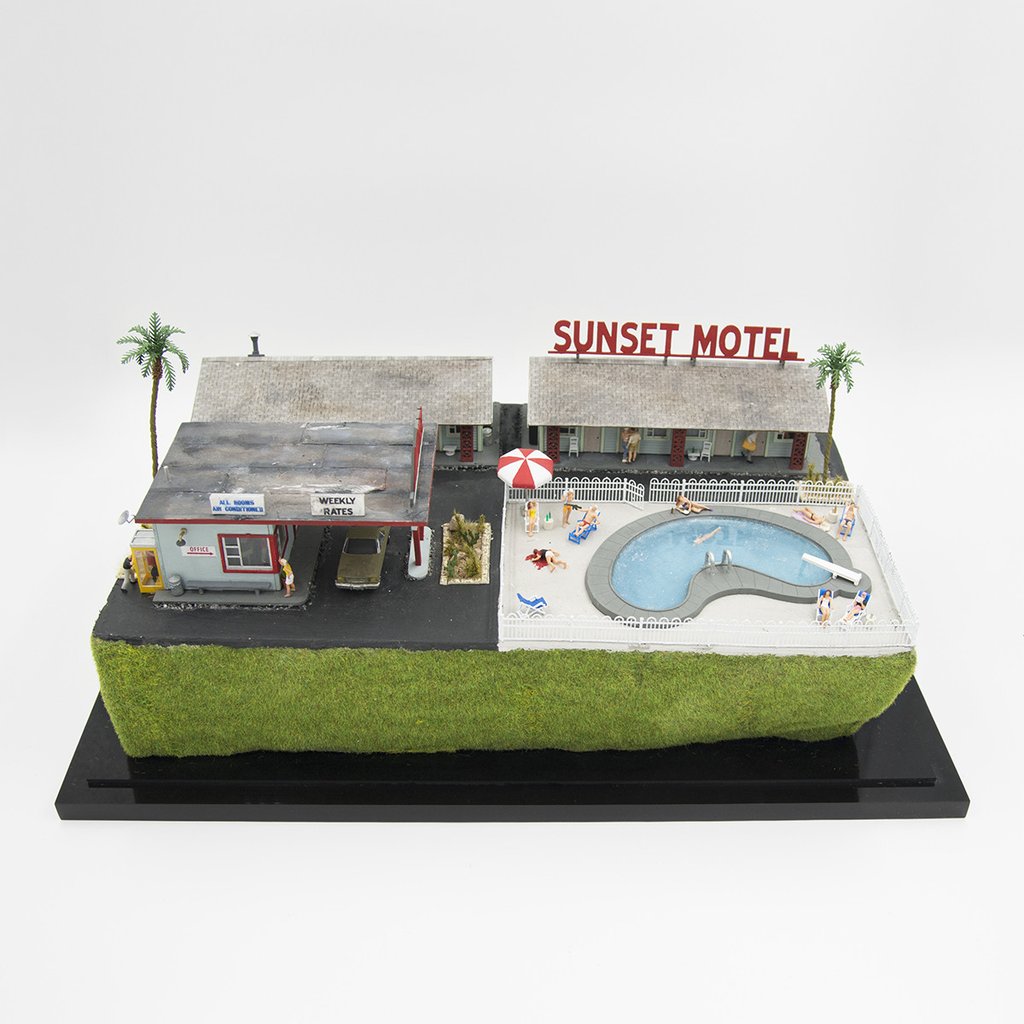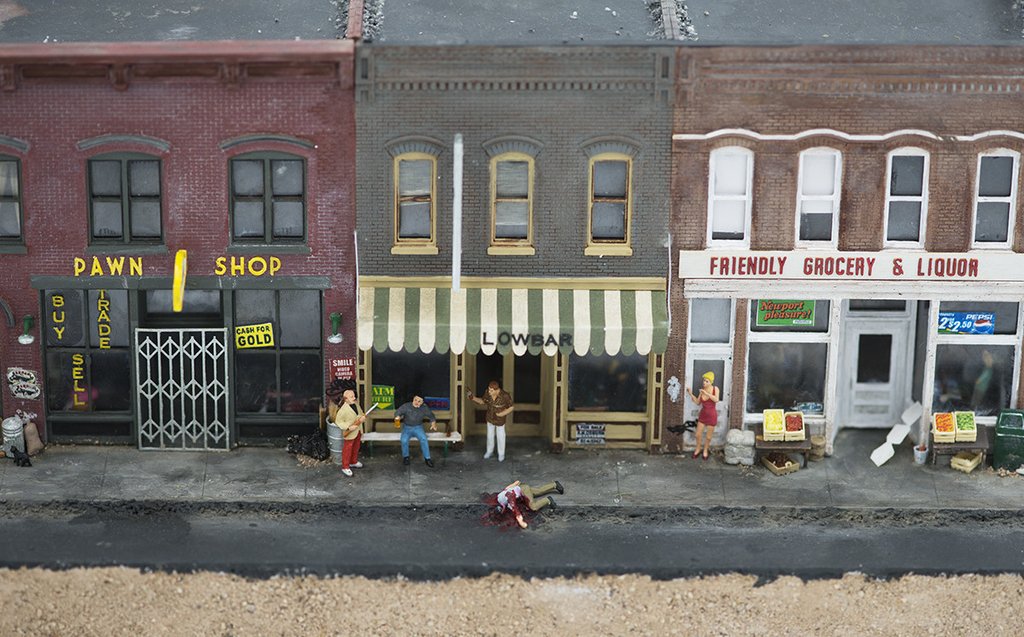Dieoramas and Miniature Crime Scenes by Abigail Goldman
| Website | Works for Sale | Instagram | Facebook | Tumblr |
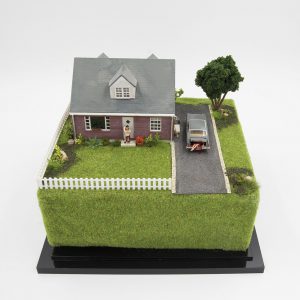 How did you first get started making dieorama miniature scenes?
How did you first get started making dieorama miniature scenes?
I started making dieoramas as a personal project and as the occasional gift for a friend. I have always been fascinated by crime and bad behavior – I spent many years working in Las Vegas as a newspaper reporter covering what I called “oddities and tragedies.” Then I began working as an investigator for the Federal Public Defender in Nevada.
First miniature scene you created?
The first scene I ever made was a man sitting on a picnic bench next to a severed head. It was a park setting – the park bench was tucked under a tree, and the man was staring forward, looking content with his bloodied companion.
Can you tell us a bit about Mea Culpa now up at Hashimoto Contemporary?
Mea Culpa is collection of 31 miniature crimes committed in suburban settings, pastoral parks, city streets and seedy motels. Most of the works are housed in a case that’s 8 inches cubed, while the smallest works are 4.5 inches across. It’s been a joy to watch people interact with the dieoramas, particularly if they aren’t aware each is a crime scene. There’s a moment when a glance turns into a pause, and then into a closer inspection, and then they’re fully leaning in and pointing: Is that really someone being sawed in half? Did that elephant really disembowel someone with a tusk?
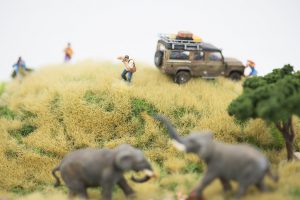 Any ghastly crime scene(s) that you’d like to create in miniature?
Any ghastly crime scene(s) that you’d like to create in miniature?
I have recently started making interior scenes – kitchens, bathrooms, bedrooms – and I am always on the hunt for tiny furniture, or items that can pass as tiny furniture, or be turned into tiny furniture. I have spent hours turning minute plastic remnants into lamps and plates and garbage cans and dressers
What material do you use to make the fake blood in so many scenes?
Honestly, I have yet to find anything that can beat cheap acrylic children’s paint. Something about the color and viscosity is just perfect. When I am working on a scene that needs a bit more gore, I blend in a fine plastic material that turns the blood a deeper red, and gives it the kind of clotting and depth you might see from a more serious injury.
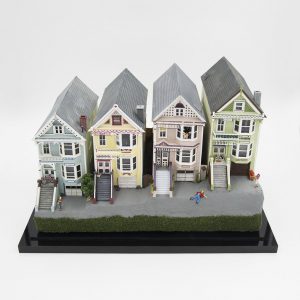 What is the most challenging aspect of your dieorama work?
What is the most challenging aspect of your dieorama work?
It can be challenging to have confidence in an idea or concept, especially when the fully realized scene is days from being ready or done. I might think of a dieorama I want to make, but then start to second guess the idea, or the look of the work. Pushing through these doubts and marching forward can be tricky.
What is the longest amount of time you’ve spent working on a dieorama?
While it’s hard to tally how long each dieorama takes to make, because there are so many steps to the process, it’s safe to say each piece many hours, over the course of several days or weeks. And in the end, I often find it’s the pieces I am most uncertain about making that have the greatest impact.
Why miniatures? What appeals to you most about what you do?
Miniatures have a unique ability to draw people in. Their smallness, their cuteness, the intimacy they command – it’s compelling to see these traits turned upside-down: Tiny, happy figures hacking each other apart, suburban scenes with bodies in the back yard.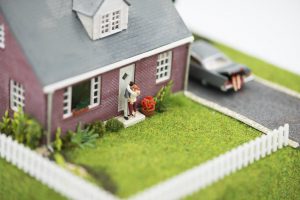 I am intrigued by the juxtaposition of the quaint and the dark, the charming and the perverse, the humorous and the grotesque – I think these tensions lurk within most of us. Anyone who cranes their neck to see a car accident knows something about the draw of the macabre.
I am intrigued by the juxtaposition of the quaint and the dark, the charming and the perverse, the humorous and the grotesque – I think these tensions lurk within most of us. Anyone who cranes their neck to see a car accident knows something about the draw of the macabre.
Favorite miniature quote?
I think Sir Arthur Conan Doyle had it right in one of his Sherlock Holmes stories when he wrote: “The little things are infinitely the most important.”
Abigail Goldman is based in Bellingham, Washington. To add one of her dieorama miniature scenes to your collection, shop the Hashimoto Contemporary site. View more dieoramas on her website, Instagram account, Facebook, or Tumblr.
